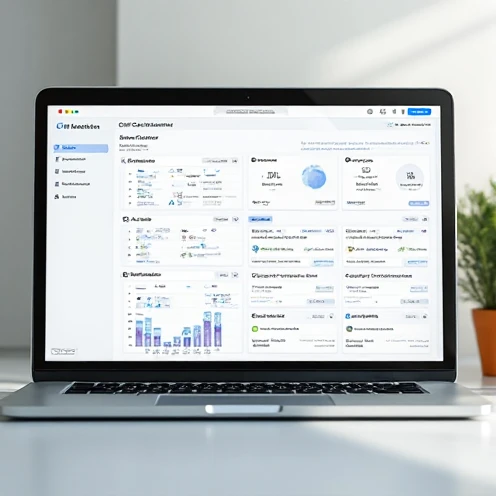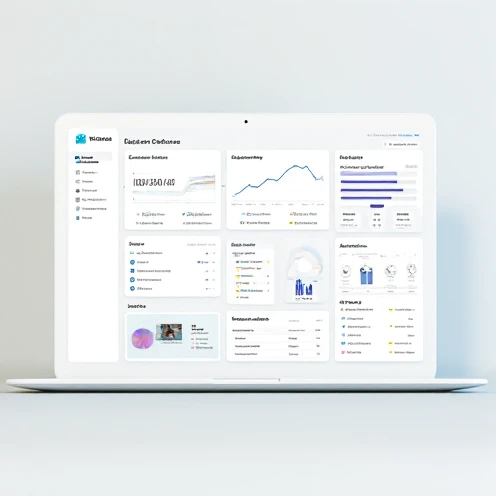Understanding CRM and Its Role in Modern Business
Customer Relationship Management (CRM) has become the backbone of modern business strategy. In today’s competitive digital world, companies cannot afford to lose customers due to poor experiences or inefficient communication. A CRM system ensures that every interaction is tracked, analyzed, and optimized for better engagement. When combined with an Onboarding Tool for SaaS, CRM becomes even more powerful. Businesses can streamline new user journeys, reduce churn, and maximize lifetime value. This synergy ensures that customers not only start using the product but also remain loyal in the long term.
Onboarding Tool For Saas: Why CRM is More Than Just a Database
Many businesses still think of CRM as a simple contact list. However, CRM platforms today offer advanced automation, predictive analytics, and customer insights that empower teams to act smarter. The integration of onboarding tools helps SaaS companies guide new users step by step.
Iklan Google AdSense
The Evolution of Customer Expectations
Customers now expect fast support, personalized experiences, and smooth onboarding. With the right tools in place, businesses can turn first-time users into long-term advocates. That is why SaaS companies invest heavily in onboarding systems integrated with CRM.
Building Strong Customer Connections with SaaS Onboarding
The onboarding phase is the most crucial moment in the customer journey. A good first impression ensures customer confidence, while a poor one increases the risk of churn. CRM systems integrated with onboarding solutions make this stage seamless.
Onboarding tools guide users through product features with step-by-step tutorials, tooltips, and walkthroughs. This approach reduces confusion and accelerates user adoption. Combined with CRM data, SaaS businesses can personalize onboarding experiences for different user segments.
Key Benefits of CRM for SaaS Companies
Customer churn is one of the biggest challenges in SaaS. CRM systems track user behavior, highlight risks, and help support teams intervene early. When onboarding tools are connected, companies can detect where users drop off and fix the problem quickly.
CRM platforms also offer insights into customer interactions. By combining onboarding analytics, businesses gain a full picture of the user journey. This data-driven approach ensures that every strategy is based on facts, not assumptions.
Essential Features of CRM Integrated with Onboarding
CRM systems send automated emails, reminders, and follow-ups. When integrated with onboarding tools, these communications become more relevant. For example, a CRM can trigger onboarding tutorials when a user hasn’t explored certain features.
Not every customer has the same needs. Onboarding tools allow customization, ensuring each user gets the right content. CRM helps identify these preferences and segments users accordingly.
Common Mistakes Companies Make Without CRM
Many SaaS companies underestimate the importance of guiding users after sign-up. Without structured onboarding, users may abandon the product before realizing its value.
Another frequent mistake is relying on manual processes. Manual onboarding takes time and is prone to errors. Without automation, businesses struggle to scale and provide consistent experiences. CRM integration eliminates these bottlenecks.
How CRM Supports Sales and Marketing Alignment
CRM ensures both sales and marketing teams work with the same information. By tracking onboarding success, both teams can refine strategies and close deals faster.
Leads that undergo smooth onboarding are more likely to upgrade to premium plans. CRM tools help identify these opportunities, while onboarding ensures customers stay engaged.
The Future of CRM and SaaS Onboarding
Artificial Intelligence is transforming CRM. With predictive analytics, companies can anticipate customer needs. AI-powered onboarding further ensures that users always get the right guidance at the right time.
The SaaS ecosystem continues to evolve. The future of CRM lies in seamless integration with onboarding, billing, support, and analytics tools. This unified approach guarantees a superior customer experience.
Choosing the Right Onboarding Tool for SaaS
When selecting an onboarding tool, SaaS businesses should focus on ease of use, customization, automation, and integration with CRM. A tool that doesn’t connect with CRM creates data silos and inefficiencies.
Best practices include starting with simple onboarding flows and improving them based on CRM insights. Measure progress, collect feedback, and optimize continuously. Over time, this approach builds a strong foundation for customer success.
Case Studies: CRM and Onboarding in Action
A small SaaS startup integrated its CRM with an onboarding platform. Within six months, it reduced churn by 30% and increased upsell opportunities.
A global enterprise used onboarding automation within its CRM to manage thousands of users across regions. This allowed consistent training, reduced support tickets, and improved retention rates worldwide.
Why CRM and Onboarding Matter Now
CRM alone cannot guarantee success, and onboarding without CRM is incomplete. Together, they create a powerful system that builds lasting customer relationships. SaaS companies that embrace this combination not only improve retention but also accelerate growth.
Iklan Google AdSense


